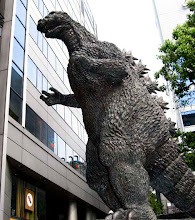
What Coase originally proposed in 1959 in the context of the regulation of radio frequencies was that as long as property rights in these frequencies were well defined, it ultimately did not matter if adjacent radio stations would initially interfere with each other by broadcasting in the same frequency band. The station able to reap the higher economic gain of the two from broadcasting would in this case have an incentive to pay the other station not to interfere. In the absence of transaction costs, both stations would strike a mutually advantageous deal. Put differently, it would not matter whether one or the other station had the initial right to broadcast; eventually, the right to broadcast would end up with the party that was able to put it to the most highly valued use. It has been suggested that this article or section be merged with Radio waves. ... This page deals with property as ownership rights. ... A radio station is an audio (sound) broadcasting service, traditionally broadcast through the air as radio waves (a form of electromagnetic radiation) from a transmitter to an antenna and a thus to a receiving device. ... For the record label, see Incentive Records. ...
Coase's main point, clarified in an article published in 1960 (Coase 1960) and cited when he was awarded the Nobel Prize in 1991, was that transaction costs, however, could not be neglected, and therefore, the initial allocation of property rights mattered in the presence of side effects (externalities). In essence, the normative conclusion most often drawn from the Coase theorem is that the property rights should initially be assigned to the actors gaining the most utility from them. The problem in real life is that governments most often do not know ex ante the most valued use of a resource. The Nobel Prizes (Swedish: ) are awarded for Physics, Chemistry, Literature, Peace, and Physiology or Medicine. ... Ex ante is a Latin term meaning beforehand. Ex ante evaluations deal with forecasting and forecasted returns on invested money. ...
Another, more refined normative conclusion also often discussed in law and economics is that government should create institutions which minimize transaction costs, so as to allow misallocations of resources to be corrected for as cheaply as possible. Law and economics, or economic analysis of law is an approach to legal theory that applies methods of economics to law.
Coase's main point, clarified in an article published in 1960 (Coase 1960) and cited when he was awarded the Nobel Prize in 1991, was that transaction costs, however, could not be neglected, and therefore, the initial allocation of property rights mattered in the presence of side effects (externalities). In essence, the normative conclusion most often drawn from the Coase theorem is that the property rights should initially be assigned to the actors gaining the most utility from them. The problem in real life is that governments most often do not know ex ante the most valued use of a resource. The Nobel Prizes (Swedish: ) are awarded for Physics, Chemistry, Literature, Peace, and Physiology or Medicine. ... Ex ante is a Latin term meaning beforehand. Ex ante evaluations deal with forecasting and forecasted returns on invested money. ...
Another, more refined normative conclusion also often discussed in law and economics is that government should create institutions which minimize transaction costs, so as to allow misallocations of resources to be corrected for as cheaply as possible. Law and economics, or economic analysis of law is an approach to legal theory that applies methods of economics to law.
...




No comments:
Post a Comment